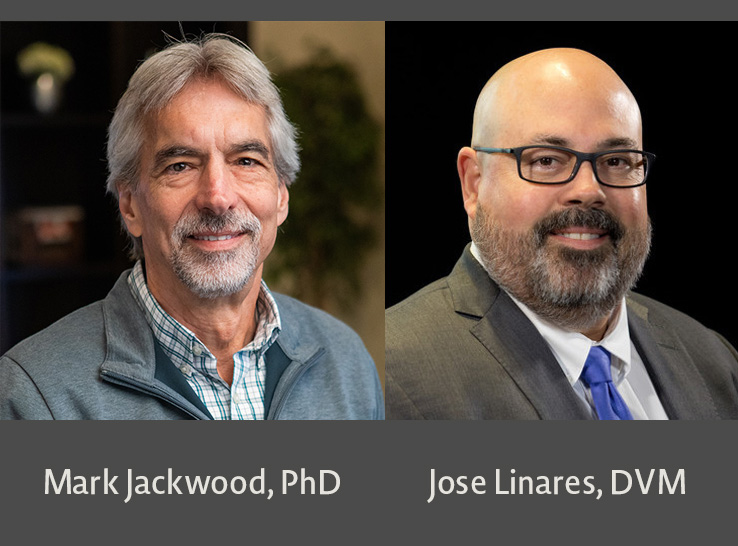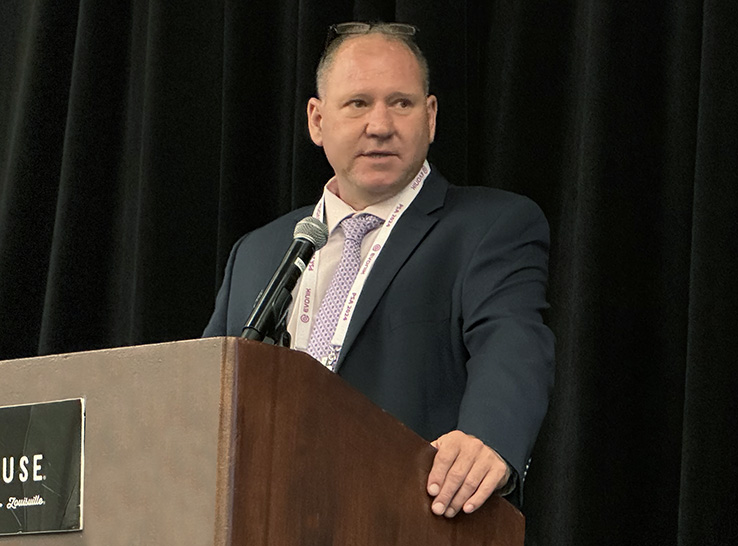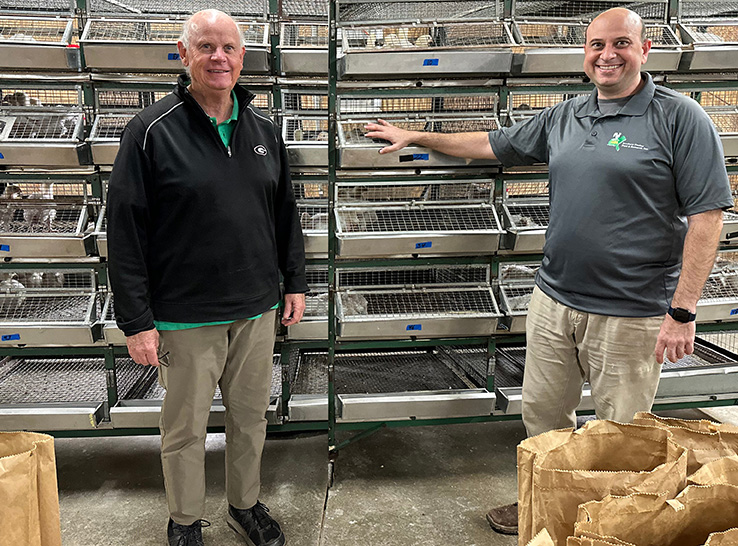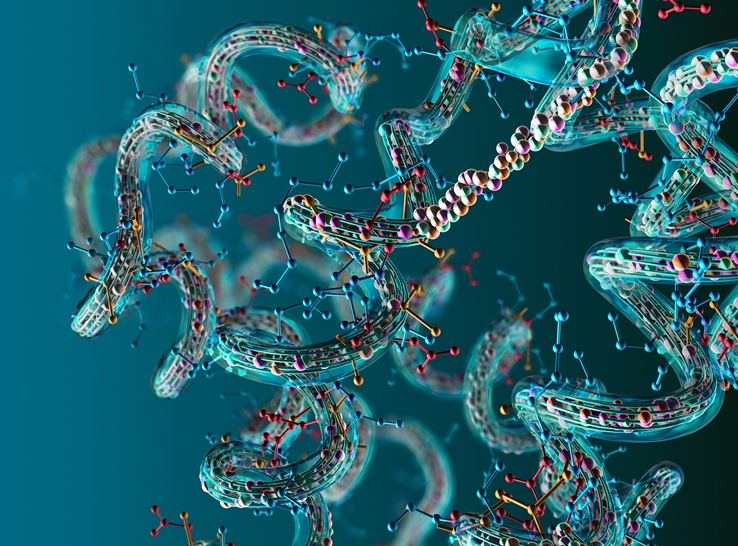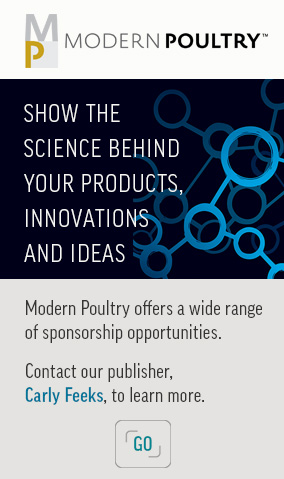In the last 2 decades, strides in poultry nutrition helped build profitability for poultry producers in the US and around the world. Average US feed-conversion rates (FCR) have improved by 23 points (0.23) since 2000, according to Michael Kidd, PhD, professor in the Department of Poultry Science at the University of Arkansas.
He expects FCR to improve by at least another 21 points (0.21) by 2050.
To reach the 2050 prediction, Kidd said the poultry industry will need to continue work on understanding ingredient nutrient quality and quantity. It also must collaborate with feed partners for improved formulations and implement new data management and modeling programs.
Kidd discussed these needs and challenges at the 2024 Poultry Science Association annual meeting.
Improving feed efficiency
Based on his 2050 prediction for feed efficiency, Kidd believes finishing time for a 5-pound broiler will drop from today’s average of 31 to 32 days to an average of 25 to 26 days.
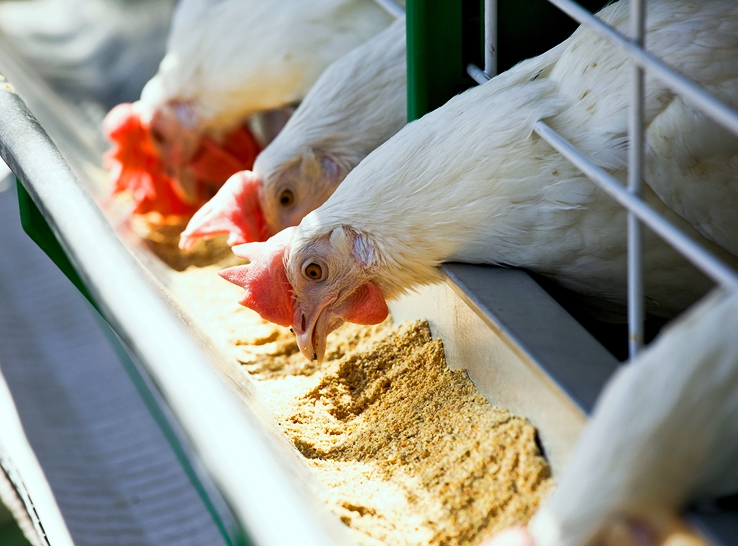 “With this drop, we will have 504 hours in the incubator and maybe 560 to 570 hours in the field,” he said.
“With this drop, we will have 504 hours in the incubator and maybe 560 to 570 hours in the field,” he said.
“If you think nutrition is important now, think about how much less feed we’re going to use to finish the birds in 25 to 26 days. For an 8-pound bird, we’re going from 12+ pounds to 10.5 pounds of feed. In a complex with a million birds, that’s going to be 1.5 pounds of feed per bird and a total of 750 tons of feed saved.”
“Feed-conversion efficiency of these birds is really saving the world with reduced housing and input resources needed to generate the same amount of protein,” he added. “I’m very optimistic on the future and where we’re headed with all of our nutrition and genetics.”
Ingredient analysis, industry collaborations
Kidd remembers when availability and digestibility of feed ingredients varied so much that any discussion about amino acids was futile. Today, feed quality is much improved.
“Having a better understanding of nutrient composition and being able to formulate more precisely has helped us tremendously,” Kidd said. “For example, L-threonine is now common, and it paved the way for other amino acids.”
But in the future, the poultry industry will need new collaborations — especially between soybean processing plants, broiler nutritionists and mill managers — to analyze feed ingredients. He says the time for these partnerships is now because an additional 1,000 metric tons per day of soybean meal-crushing capacity is coming online in the next year.
“There’s never been a better time for the poultry industry to partner with the soybean crush industry for efficiencies,” Kidd said. “These crush facilities all have near-infrared (NIR) radiation on the soybeans going in and the meal coming out.”
Sharing the NIR information and analyses of soybean meal amino acid content with integrator nutritionists and mill managers would not only help increase the value of soybean meal but also allow for predictive and precision formulation.
“Collaboration is a tremendous opportunity now because these crush plants are showing new leadership,” Kidd added.
New technologies
Many new technologies, including artificial intelligence (AI) platforms, are being developed. One example is a program designed by a computer science team at the University of Arkansas.
“I’m partial to this because it is one of our recent world patents,” Kidd said. “Using a camera makes it possible to assess real-time bodyweight projections per bird per minute anywhere in the chicken house. The biggest problem, though, is occlusion, followed by dust.
“But the AI platform has tremendous implications with the small birds. Consider the efficiencies in terms of uniformity that we could have in a particular scenario. You could tell the plants what your yield values will be coming out of the plant on Friday when the birds are still in the field on Wednesday.”
Kidd believes the industry will embrace these new AI platforms, depending on the integrator. Health platforms are already available and nutritional platforms are nearing completion.
“We’re also going to see more data acquisition,” Kidd said. “Robust data management and data modeling can shed light on profitability scenarios affected by dietary alterations.”
However, implementing new technologies will require more people, computer science teams and data analytics. Software will help, but people will be needed to figure things out.
“I think these new technologies will put the nutritionist and veterinary teams right in the center to help solve problems going forward,” he added. “And I think it’s going to be phenomenal.”
Recalibrate vitamins, minerals
“We’ve got to rewrite the book on nutrition,” Kidd said. “Modeling and prediction equations are going to be exceptional, but we need some data and a starting point. And we must re-examine our minerals in forms that are more relevant.
“For example, take a broiler-breeder — you have to consider that they’re going to be eating less feed every year,” he continued. “Vitamin and mineral levels must be adjusted accordingly.”
“So, opportunities are there but also challenges. There are no longer a lot of us researching vitamins and minerals, so we must be really efficient and focused.”
It’s profit, not feed conversion
“At the end of the day for poultry, the No. 1 opportunity is looking at profitability,” Kidd added. “It’s income over feed costs per pound of wings, paws, certain parts from the breast. That is the only way to do it. We will not be driven by feed conversion.
“In this country, half of our industry has a big bird. Feed prices allowed that to happen. Shackles so far are fixed costs. The bird is the variable cost.
“If we improve the fixed cost over variable cost ratio, we’re going to make money, and that’s why we have a big bird in this country. Therefore, it’s not feed-cost driven; it’s profit driven from a plant,” he concluded.

